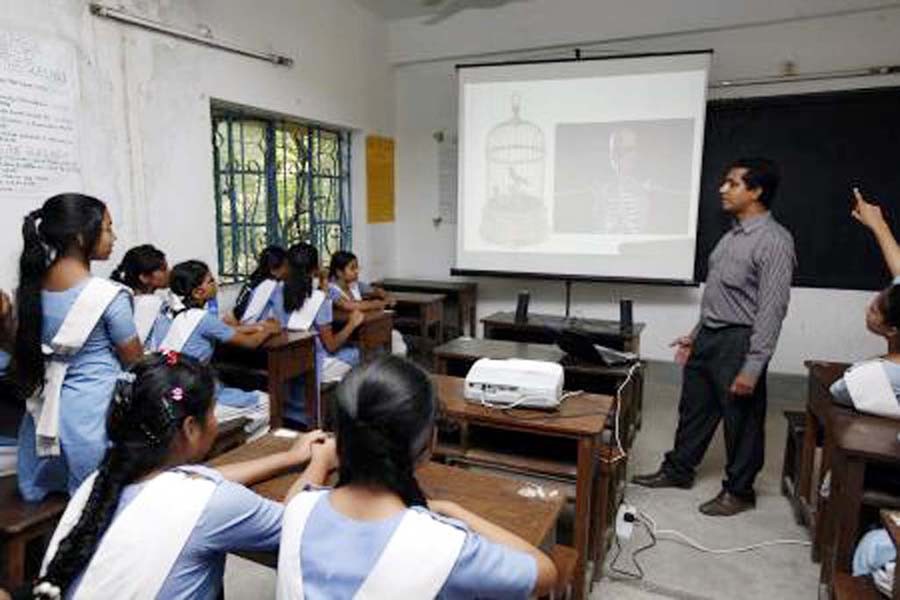If providing 35 thousand classrooms of different educational institutions all over the country with multimedia equipment is part of the government's digitisation effort, the programme has failed to live up to the expectation. Around Taka 10 billion has already been spent. A bigger amount is now being invested through an ongoing project. But both output and outcome of the endeavour till now have remained frustrating. Multimedia classes are meant to teach students via audio-visual displays instead of mere books. It opened up a new horizon in the domain of teaching and learning for teachers and students alike. A multimedia classroom comes to life by linking up projector, laptop, internet, modem, speakers, screen and contents. Lectures are presented with the help of animations and video clips for making subjects easily comprehensible to pupils. But recent newspaper reports suggest that these classrooms in Bangladesh are not being properly used in beneficiary schools, colleges and madrasas. The teachers lack the supervisory and delivery skills for taking such classes. As reported, the multimedia classrooms could not even be rolled out in many institutions with the equipment still remaining in packets. There is also no initiative for repairing the damaged ones. Again, such classes could not be taken in some schools in the absence of electricity and space. And if there is electricity, the internet speed is found to be too slow or the laptop is used for personal purposes.
According to the Board of Intermediate and Secondary Education, the performance of only a few districts is satisfactory in the use of multimedia technology in school classrooms. The rate of usage is negligible in most others. In some cases, there is no interest in it or classes are taking place in a casual manner. Although the government schools are supposed to arrange one multimedia session in each class every day, it does not happen even in a month. In many cases, it does not materialise due to dearth of teachers' training. And in others, there are no computer teachers. It could be gathered that as many as 23,000 secondary schools, colleges and madrasas were allotted multimedia classroom equipment in the first phase of the government's ICT project. The project is now in its second phase.
For running this programme successfully, qualified teachers are required alongside equipment. Besides, power supply is essential for its operation. Trained teachers are needed for preparing contents and then delivering those in the classrooms. But technological shyness and dearth of power supply are derailing the grass-root preparation for a digital Bangladesh. Even trained teachers are on the verge of forgetting topic-based grooming they received due to inadequate practice and application. Questions have also been raised about the adequacy of teachers' training on multimedia classes for only two weeks.
Students of those educational institutions which have been allotted multimedia classrooms are undoubtedly lucky. But why many of these institutions are not interested to use the facility needs to be investigated. There is also no alternative to inspecting the multimedia classrooms on a regular basis and strengthening their monitoring mechanism. But there is an urgent need for trained teachers, sufficient power supply and adequate infrastructure. Without these three essential ingredients, mere supply of equipment will not yield the desired results.


